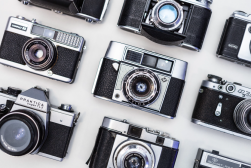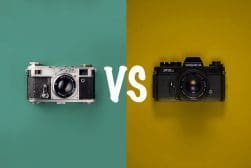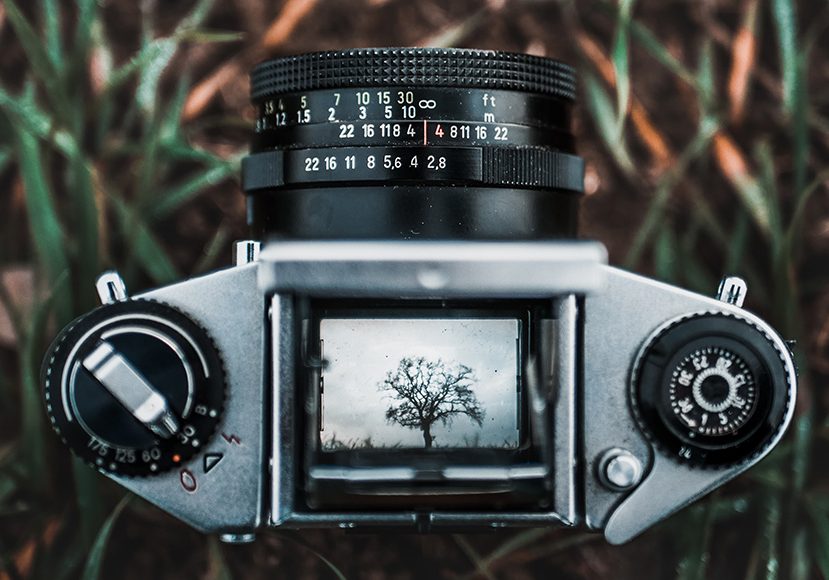
25 Fun Photography Facts About Pictures & Cameras in 2024
These fun photography facts about pictures and cameras will blow your mind! We've compiled 25 interesting and mind-blowing photography fun facts for you.
Learn | By Ana Mireles
Get ready to have your mind blown by our selection of 25 photography fun facts, updated for 2024.
The world of photography and cameras is an astonishing place, with plenty of interesting facts to impress your friends or win your next pub quiz!
We’ve hand-picked our favourite facts about pictures, taking photos and everything in between, so let’s get stuck in.
25 Astonishing Camera and Photography Facts
1. The first photo took 8 hours to expose

The earliest saved photographic image. Nièpce Heliograph taken at Le Gras, France.
The oldest photograph that we know is from 1826. It’s credited as the first photo in history, and french photographer Nicéphore Niépce took it.
Back then, materials weren’t as sensitive as they are today. The photograph was taken with a camera obscura and printed onto a metal plate.
The image captured the view from Niépce’s window, which took eight hours to expose.
2. The most expensive photograph sold at $12.4 million
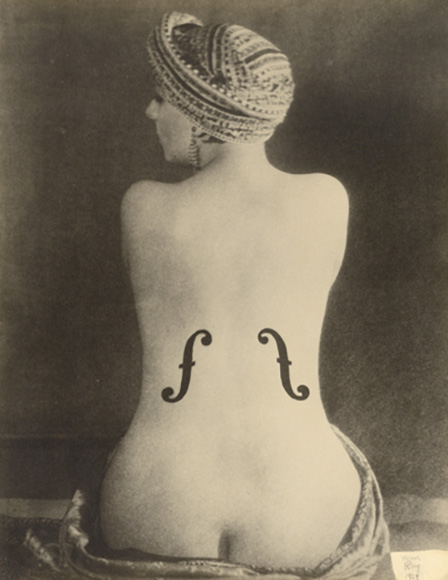
Ingres Violin (1924) Man Ray
As of 2022, the most expensive photograph ever sold is Man Ray’s Le Violon d’Ingres. The original print from 1924 was auctioned by Christie’s in May 2022.
The international head of photographs at Christie’s said:
“This beguiling Surrealist image is the result of a unique and hand-manipulated darkroom process.”
The estimates considered that it would sell for $5-7 million. Instead, it broke all records and reached $12.4 million.
3. The most expensive photograph of a living artist sold at $4.3 million
As of 2022, the record for the most expensive photograph ever sold by a living artist was Peter Lik’s ‘Phantom‘. This photograph sold for $6.5 million in 2014. It was the most expensive photograph altogether until 2022. (See more Peter Lik galleries and photos.)
Then, the title got stolen by Man Ray’s ‘Le Violon D Ingres in May 2022.
4. The first digital camera with a memory card holds only ten photos
Most inventions arrive after a series of developments that made them possible. In the case of the first digital camera, the first attempts date back to 1969.
However, it wasn’t until 1988 that the first fully digital camera that could capture data to a memory card got out.
Fujifilm introduced the FUJIX DS-1P at Photokina in 1998. It had a capacity of 2MB, which could hold up to 10 photos.
Keep reading for more fun photography facts…
5. The first aerial photograph doesn’t belong to the first aerial photographer

Felix Nadar
Aerial photography started in France. The first photographer to do it was Gaspard Félix Tournachon, better known as Nadar. He took the photographs by flying in a hot air balloon over Paris in 1858.
Although he was the first to practice this type of photography, the first aerial photo we know is not his. It belongs to James Wallace Black and Samuel Archer King. The subject is the city of Boston, seen from a 630m height and dates back to 1860.
6. The first panoramic camera used daguerreotype plates
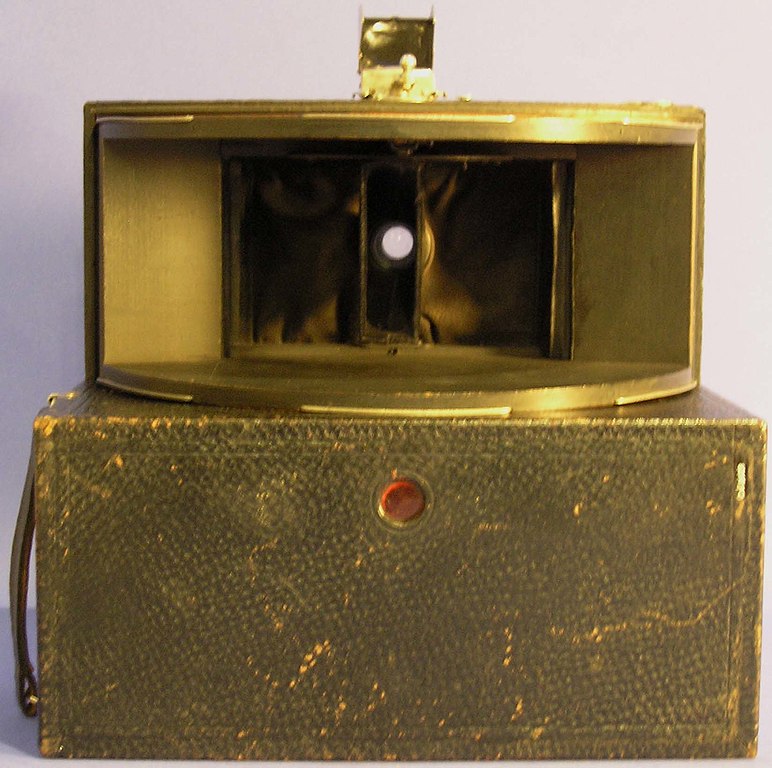
Kodak #4 Panoram box roll camera with swinging lens
Friederich Von Martens was a German photographer who lived in Paris. He specialised in seascapes and cityscapes.
In 1845, he invented the first ever panoramic camera. It featured a swing lens and captured images in a curved daguerreotype plate. He later experimented with albumen prints and talbotypes. The name of the camera was Megaskop-Kamera.
The first mass-produced panoramic camera was the Al-Vista from 1898. Then, in 1899, the much more popular #4 Kodak Panoram conquered the amateur market.
How Much Do You REALLY Know About Photography?! 🤔
Test your photography knowledge with this quick quiz!
See how much you really know about photography...

Then, in 1904, the Cirkut camera was patented. It was a large format camera that was able to capture 360-degree images.
7. The first SLR camera dates back to 1861

Cross section of an SLR camera
Most of us think of the modern design of a 35mm SLR when we hear about SLR cameras. Instead, they existed as large and medium format cameras long before.
The first SLR patent was registered in 1861 but wasn’t produced until 1884. At first, SLRs were large format cameras. Then, medium format SLRs were developed until they reached a pocketable size in 1933.
The 35mm SLR cameras we know so well started with the Filmanka in 1931. The same principles and design were later applied in digital photography to create the DSLR.
8. The most expensive camera is worth €14.4 million
The most expensive camera is not the newest, nor is it the one with the most megapixels. Instead, it’s a Leica 0-Series No.105.
Leica only produced 22 Leica 0-series back in the day; now, only 12 are still around. That’s what makes them so valuable. The last time one of them made it to an auction, it started at €1 million and reached the astonishing price of €14.4 million.
Before that, the highest price was $2.3 million, reached by the Leica 0-Series No.122.
9. The first underwater photo was taken on a wet collodion (no pun intended)

Credit: Louis Marie Auguste Boutan
Underwater photography started with a marine life expert named William Thompson. He captured the first underwater photograph in 1856 for engineering purposes.
He wanted to study the possible damage to a bridge’s underpins. Because of this, he is not considered the first underwater photographer.
This title belongs to Louis Marie Auguste Boutan. He developed an underwater camera in 1893. Then, made the first underwater portrait in 1899 (approximately), using a wet plate collodion process.
10. The oldest photography museum in the world was founded in 1947

Credit: Carol M. Highsmith, Public domain, via Wikimedia Commons
Fortunately, nowadays, we can find many photography museums around the world. However, this wasn’t always the case. The oldest photography museum is the George Eastman Museum in Rochester, NY. It was founded in 1947, more than 100 years after the invention of photography.
The collection holds millions of objects related to photography and its history. It shows at least three temporary exhibitions at a time. It also owns a leading library of photography and cinema-related books.
The institution is hosted in George Eastman’s historic mansion. So, you can see where this photography pioneer lived and worked.
Keep on scrolling down for more photography facts you might not have already known.
11. Post-mortem photography is still practised
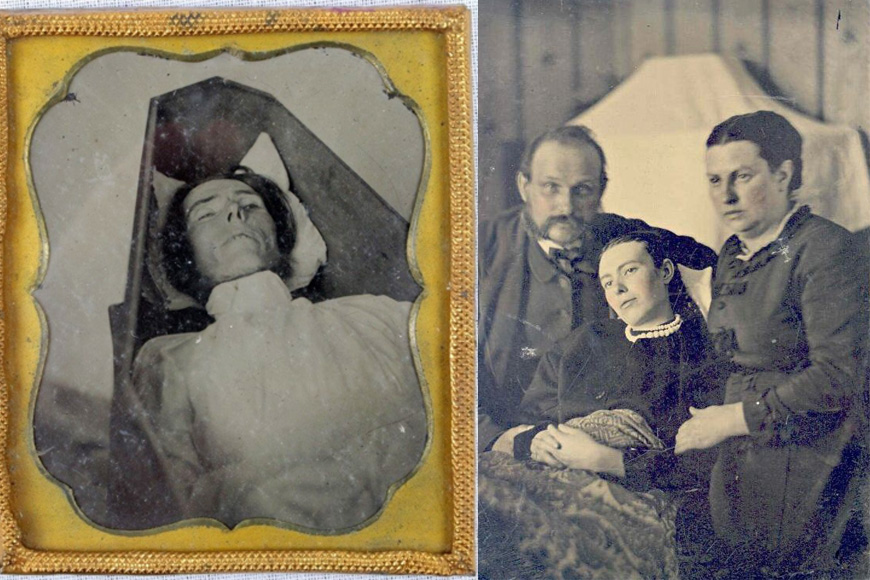
Post mortem tintype and post mortem photograph from the Victorian era.
This may be no surprise for people from communities where this is still common. However, in many of the world, post-mortem images are seen only in photography museums.
Post-mortem portraits were one of the most popular subjects in the early years of photography. Today, it’s not such a common practice. However, it’s far from being forgotten.
For example, in the Indian city of Varanasi, there’s a group of ‘death photographers’. They earn a living by photographing people one last time before they are cremated.
12. The first photography paper was used for cameraless images
One of the most peculiar photography facts is that the first photographs weren’t done on paper. On the other hand, the first photographic paper was used to record images without a camera.
That’s right, in the beginning, many experimented with the photographic process. The first photo made by Nicéphore Niépce is what’s called a heliograph. This technique required a photosensitive plate on the camera obscura.
Next, in the timeline, we find the daguerreotype. This was a direct-positive process. The image was recorded on photosensitive copper or glass plates.
At last, in 1939, Henry Fox Talbot announced the possibility of making cameraless images in photosensitive paper. When he perfected it, he patented the very popular calotype. This technique captured a negative image on photographic paper.
13. Funny cat photos have always been a thing

Daguerrotype of a cat, author unknown
The obsession with cats in the photography world started long before the Internet. The pioneer in cat photos was Harry Pointer; he began photographing cats in the 1870s.
Walter Chandoha is one of the most prominent cat photographers in history. His career lasted over 70 years. His images peaked during the 1950s until the 70s. He wrote more than 30 books, published calendars, featured greeting cards, puzzles, etc.
Now you can appreciate cats on Instagram as part of a long-standing tradition in photography history.
14. The most viewed photograph was captured in 1996

Credit: ImjustKai, CC BY-SA 4.0, via Wikimedia Commons
You’re probably one of the millions of people who have seen this photograph. Especially if you remember the old Windows default screen.
In 1996, Charles O’Rear captured a green hill in a blue sky in Los Carneros American Viticultural Area of Sonoma County, California, US. The photograph is called Bliss, and it’s considered the most viewed photograph in history.
This is because it was the default wallpaper of Windows XP. The estimate of Windows XP licences sold in the five years of existence is close to 500 million. For all the people who used these computers, Bliss was the image they saw daily.
15. The first color photograph features a tartan ribbon

When you think about color photography history, you probably think of Kodak. This is partially true. Eastman Kodak released the first integral tripack color film in 1935, called Kodachrome.
However, the first color photograph was taken in 1861 by Thomas Sutton. He used a three-colored method developed by James Clerk Maxwell in 1855. The subject of the photo is a colorful tartan ribbon.
16. The world’s largest photo negative was made in a soon-to-be-demolished building
This is one of those photography facts that you’ve never wondered about. However, there is one artist who did think about it.
Joel Nicholas Peterson decided to turn an old building into the biggest camera obscura by drilling holes in the walls. Then, he exposed the projected image to the lithographic film. These made it to the Guinness Book of World Records as the largest film negatives at 13-foot tall.
They sit together with the world’s longest photo negative, which is 260ft (79.37m).
Peterson used the negatives to create cyanotype prints. He called the artwork ‘Blueprints for Observation’. You can see a short documentary about it in the above video.
17. Kodaking was a verb thanks to the first commercial camera

If you wonder about the first camera, you probably think about brands like Canon or Nikon. Nowadays, we mainly associate Kodak with films.
So, this might be one of those facts about photography that surprises you. But, the first camera that reached the amateur market was the Kodak #1. This was back in 1888, and it came loaded with a 100-exposure roll film.
Thanks to this invention, many words derived from Kodak entered the English language. Just like today we may be Photoshopping, Googling, or Instagramming – people from the 1890s were Kodaking away.
18. The world’s oldest camera obscura still working is in Dumfries, UK
Photo of the image projected onto the focusing table of the Dumfries Museum camera obscura Credit: Geni, CC BY-SA 4.0, via Wikimedia Commons
Robert Thompson bought an 18th-century windmill in Dumfries, UK, in 1834. Then, he founded The Dumfries and Maxwellton Astronomical Society and turned it into an observatory.
At the top, the society decided to build a camera obscura. This dark chamber has an opening with a shutter operated with ropes. When it’s open, the light is projected into a table below, thanks to an adjustable mirror.
The table has a concave surface to help sharpen the image, and the height can be adapted to adjust the focus.
This is the oldest functioning camera in the world and is open to the public. So, you can visit it if you’re in the area.
19. The first high-quality photograph of the universe was taken this year (2022)

Credit: NASA, ESA, CSA, STScI
Nowadays, we’re used to getting constant upgrades, but not many firsts. Well, this is one of those first-photography facts that revolutionise our view of the world.
In 2022, President Joe Biden released Nasa’s first high-quality photograph of the universe. It was taken using the James Webb Space Telescope – a successor of the famous Hubble Space Telescope. It sits a million miles away from earth and has a near-infrared camera and spectrograph.
You can download the image here.
20. The longest time-lapse photography project started in 2015 – and it’s still going
In 2019, artist Joseph DiGiovanna decided to start the longest time-lapse project in history. The idea is to document the changing skyline of New York over 30 years.
He mounted a Sony a7s camera on a corner of his apartment facing the window. The camera is tethered to a MacBook Pro that receives the images taken every 30 seconds.
If everything goes as planned, the project will end in 2045, after 10,958 days. You can follow the Instagram account nyc_timescape to see the project’s progress. You can also watch the above video to learn more about it.
21. The longest and largest known SLR lens is a constant battle amongst brands

Credit: John Lemieux from Mammoth Lakes, USA, CC BY 2.0, via Wikimedia Commons
This is one of those photography facts constantly changing due to new developments and releases. However, as far as I could find, the biggest and most expensive SLR lens is the Leica APO Telit-R 1600mm.
The 1600mm telephoto lens costs over 2 million dollars. It’s 47.24″ long (119.9 cm), it has a 16.5″ diameter (41.91 cm), and it weighs 132 lbs (59.87 kg). The lens needs a particular four-wheeled vehicle designed by Mercedes to serve as a mobile tripod.
Although in 1993, Canon released what’s known as the longest lens in the world with full AF capabilities. It’s a 1200mm super-telephoto with an f/5.6 aperture.
22. The abstract photography movement doesn’t necessarily use cameras
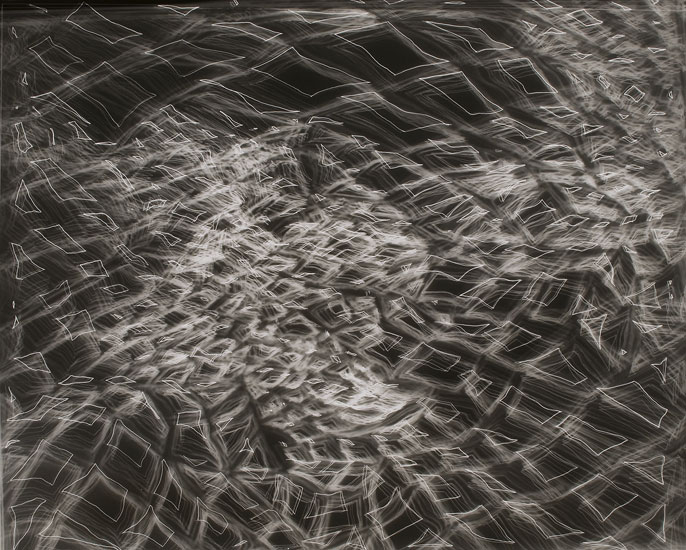
Photogram by Mareen McQuillan, Aliyanagee, CC BY-SA 4.0, via Wikimedia Commons
While many artists use an analogue or a digital camera to do abstract photography, some don’t. Abstract photography doesn’t have a fixed point of origin. Instead, it’s associated with many other movements like Photo-Secession or Straight photography.
One of the photography facts that unites them is their attempt to place the photographic media inside the fine art world.
Some abstract photographers use a pinhole camera. Others create their images entirely in a dark room. More photography facts coming up!
23. The street photography movement started in Paris
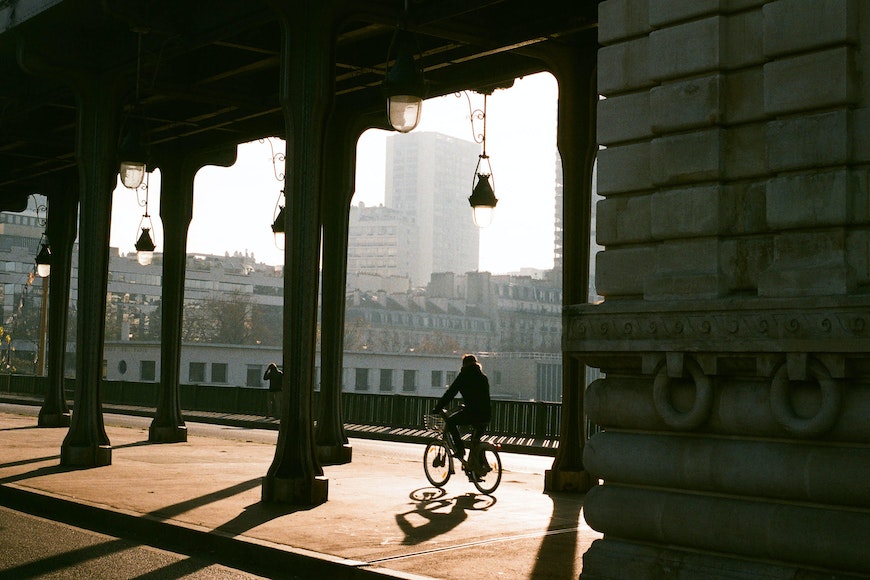
Credit: Anna Urlapova
Documenting life on the streets dates back to the invention of photography. Having said that, street photography officially started in the 1930s in Paris.
Henry Cartier Bresson and Brassai are some of the first photographers street photographers.
To this day, street photography is one of the most popular activities for amateur and professional photographers. However, the idea of what constitutes street photography is still controversial. Some of the most debated issues is whether or not it requires a person in the scene.
24. We share 3.2 billion images daily

Credit: Brian Ramirez
How many photos are uploaded to the Internet every day? That’s a good question and very difficult to answer.
Of all the photography facts I was researching, this was the most difficult to find. Most reliable sources have information dating a few years back. On a topic that changes so rapidly, this is a bit problematic.
Instead, the more updated sites weren’t very clear about how they got their data.
So, I’m sharing with you the best answers I could find. According to Brandwatch, in 2019, 95 million photos were uploaded to Instagram daily. If you’re curious, the most liked picture from all of those is one of an egg.
Then, there’s the study of Dr Paula Dootson from 2020. Here she states that 3.2 billion images are shared daily online with 720,000 hours of video.
25. Most portrait photographers will ask you to turn to the right

Credit: Godisable Jacob
According to Wake Forest University, the left side of our face is more photogenic. Many other researchers have confirmed this. Most of them state that this is because this side shows more emotion.
In the digital era, where we constantly take selfies and portraits, it’s good to know which side is your best side.
That’s it for the photography facts!
Final Words
I hope you enjoyed these fun facts about photography – and even learned a thing or two.
Do you know any other photography facts that we missed? Make sure you leave them in the comments below!

Check out these 8 essential tools to help you succeed as a professional photographer.
Includes limited-time discounts.






